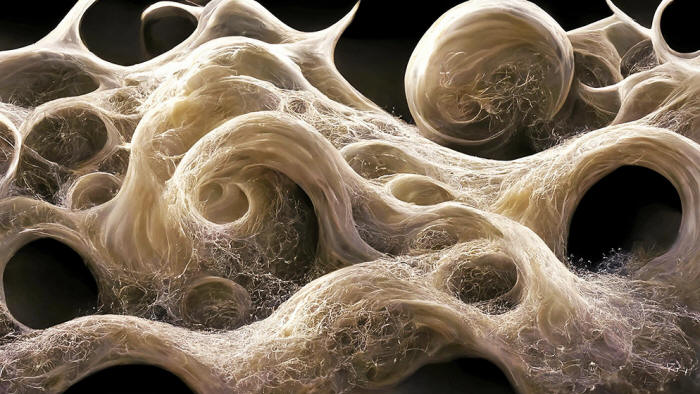|
February 16, 2023 from BigThink Website
Adobe Stock
When you combine the Uncertainty Principle with Einstein's famous equation, you get a mind-blowing result: Particles can come from nothing...
This is a question that
has bothered philosophers as far back as the ancient Greeks, where
they debated the nature of the void. They had long discussions
trying to determine whether nothing is something.
The removal of matter would mean that energy would remain.
Much in the same way that the energy from the Sun can cross to the
Earth through empty space, heat from outside the container would
radiate into the container. Thus, the container wouldn't be truly
empty.
Then there would be absolutely nothing inside the container, right?
It turns out that nothing isn't nothing.
However, one of the most confusing of all quantum principles is called the Heisenberg Uncertainty Principle, which is commonly explained as saying that,
While that is a good representation of the principle, it also says that you cannot measure the energy of anything perfectly and that the shorter the time you measure, the worse your measurement is.
Taken to the extreme,
These quantum principles have mind-bending consequences for anyone trying to understand the nature of 'nothing.'
For example, if you try to measure the amount of energy at a location - even if that energy is supposed to be nothing - you still cannot measure zero precisely.
Sometimes, when you make the measurement, the expected zero turns out to be non-zero.
And this isn't just a measurement problem; it's a feature of reality.
When you combine this bizarre fact (that zero expected energy can be non-zero, if you examine a short enough time period) with Einstein's famous equation E = mc2, there is an even more bizarre consequence.
Einstein's equation says that energy is matter and vice versa.
Combined with quantum theory, this means that in a location that is supposedly entirely empty and devoid of energy, space can briefly fluctuate to non-zero energy - and that temporary energy can make matter (and antimatter) particles.
This appearance and
disappearance has some superficial resemblance to the effervescent
behavior of the foam on the top of a freshly poured beer, with
bubbles appearing and disappearing - hence the term "quantum foam."
One demonstration of this is when researchers measure the magnetic properties of subatomic particles like electrons.
When the effect due to quantum foam is taken into account, theory
and measurement agree perfectly - to twelve digits of accuracy.
The effect goes something like this:
This is where more familiar quantum effects come into play because
classical quantum theory says that particles are both particles and
waves. And waves have wavelengths...
However, inside the gap, only waves that are shorter than the gap can exist. Long waves simply cannot fit. Thus, outside the gap, there are waves of all wavelengths, while inside the gap there are only short wavelengths.
This basically means that,
Thus, if the quantum foam is real, the
plates will be pushed together.
Nothing is
something after all...
|


